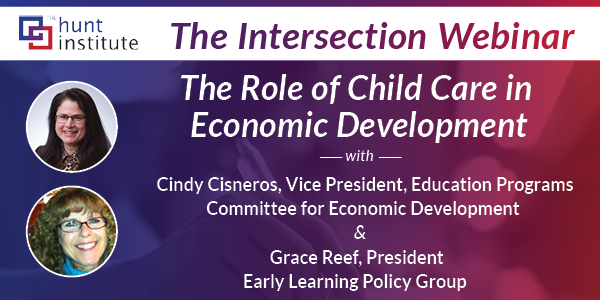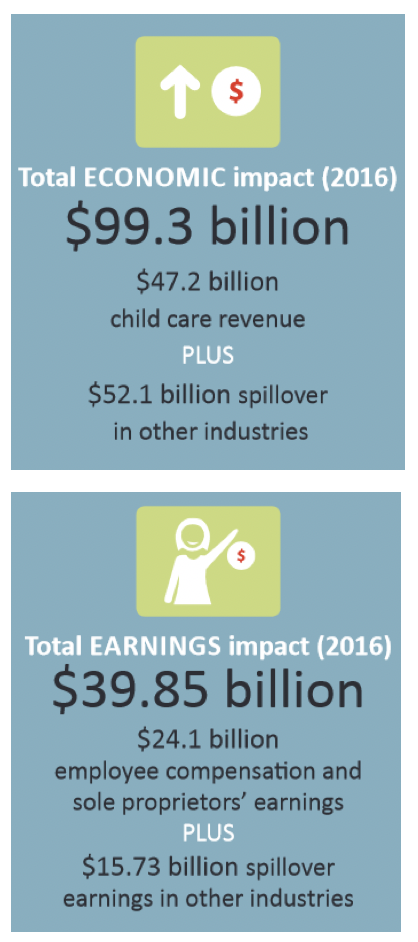

May 10, 2019

We opened May with another great Intersection Webinar focused on early childhood content. We were delighted to see more than 50 participants from across the U.S. who represent nonprofits, associations, education policy groups and more, tune in live to hear Cindy Cisneros, Vice President of Education Programs at the Committee for Economic Development (CED) and Grace Reef, President of the Early Learning Policy Group.
Cindy and Grace discussed CED’s latest report, “Child Care in State Economies – 2019 Update,” which was last updated four years ago.
Below are the top key takeaways from the webinar as well as the full recording, which you can watch and share with your colleagues.
If you’re new to our Intersection Webinars, The Institute hosts them twice a month, on Wednesdays at 1 p.m. ET. They cover the latest research, resources and trends across the education continuum. If you’d like to be added to our mailing list, click here, or follow us on Twitter for our upcoming webinar announcements, Institute programs, and more!
Key Takeaways | The Role of Child Care in Economic Development
 $99.3 billion dollars. This includes $47.2 billion in direct revenues and $52.1 billion in spillover effects (the expenditure of earnings received by those in the industry, plus the purchase of goods and services to support child care operations).
$99.3 billion dollars. This includes $47.2 billion in direct revenues and $52.1 billion in spillover effects (the expenditure of earnings received by those in the industry, plus the purchase of goods and services to support child care operations). For our full conversation with Cindy and Grace, watch the webinar below:
Don’t miss our next Intersection Webinar on May 22 at 1 p.m. ET. Join us for a conversation with Halley Potter, Senior Fellow at The Century Foundation (TCF). Halley will provide an overview of TCF’s latest report, “Scoring States on Charter School Integration“, including an analysis of how states support racial and socioeconomic integration in charter schools.
Stay tuned and follow us on Twitter for details on upcoming webinars and more.
See you at the Intersection,
The Hunt Team
